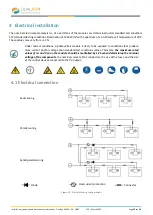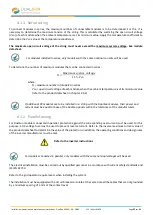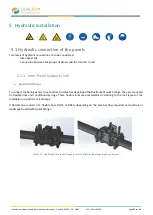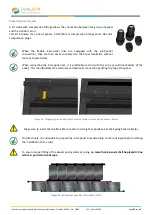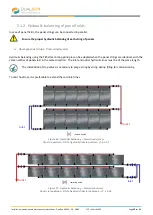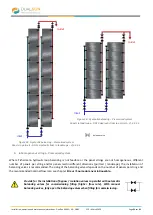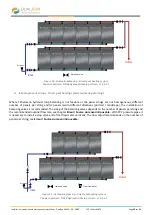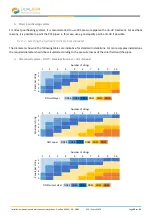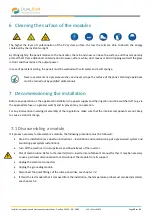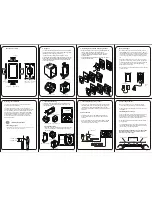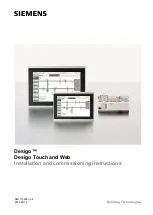
Installation, operation and maintenance instructions - DualSun XXXM
–
60
–
3BBP
V1.2
–
March 2020
Page
35
sur
41
5.1.3
Connecting the panel field to the transfer circuit
The transfer circuit pipes carry the heat transfer fluid between the sensor field and the elements of the solar circuit in
the technical room.
Once the inter-panel links are installed on the panels as shown above, the transfer lines are to be connected to the
M3/4’’ male connections for the DN15 links, or M1’’ connections for the DN26 links, see chapter
The sealing of the fittings is ensured by a high-temperature fibre O-seal (in addition to the usual sealing products such
as oakum, filetix, etc.).
5.1.3.1
Selecting the hydraulic transfer lines material
a.
Pressurised system
Three types of transfer lines can be used to connect the solar station to the inlet and outlet connections described
above:
1.
Copper pipes,
2.
Stainless steel tubes,
3.
Multilayer PEX-Al-PEX tubes.
DualSun suggest the use of multilayer pipes for hydraulic transfer lines. Indeed, due to the low temperatures and
pressures in the solar circuit (<80°C and 6 bar max.) and the resistance to glycol at over 80°C, the multilayer is ideal
for hybrid systems. The table below summarises the main advantages and disadvantages of the different types of
compatible pipes:
Copper pipe
Stainless steel tube
Multilayer tube
Technical constraints
> 150°C at 10 bar
150°C at 10 bar max.
95°C at 10 bar max.
Cost
High
Moderate
Low
Required level of
competence
High
Moderate
Moderate
Specific equipment
required
Torch
Tooling for collars
Crimping pliers
Main advantages
Thermal performances,
operation range
Flexibility, all-in-one kits
Cost, easy and fast to
install
Main disadvantages
High price and complexity
of installation
Rings trap air, reliability
of collars
Crimping pliers and
accessories
Table summarising the advantages and disadvantages of compatible pipes
Multi-layer piping for the solar circuit offers real time and cost savings compared to other variants. Nevertheless,
there are a few considerations to be taken into account:
•
To avoid heat loss from the circuit, choose pre-insulated multilayer piping.
•
The insulation on the multilayer is not suitable for outdoor use, so it is necessary to provide insulation for
outdoor application (UV and weather resistant) for the parts of the circuit exposed to the elements.
•
Include the temperature probe cable when laying the pipes, see
Erreur ! Source du renvoi introuvable.
.


